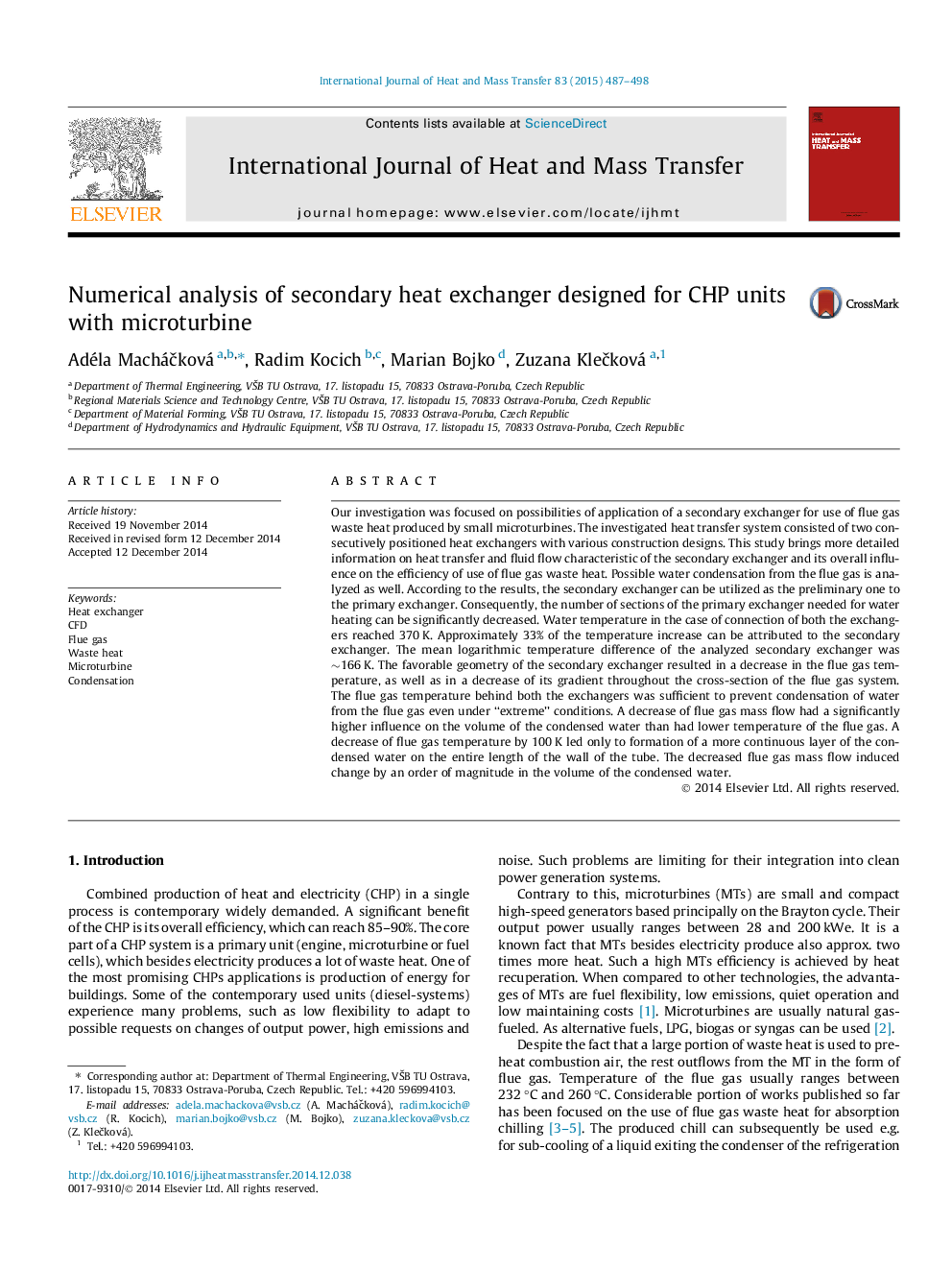| کد مقاله | کد نشریه | سال انتشار | مقاله انگلیسی | نسخه تمام متن |
|---|---|---|---|---|
| 657202 | 1458059 | 2015 | 12 صفحه PDF | دانلود رایگان |
عنوان انگلیسی مقاله ISI
Numerical analysis of secondary heat exchanger designed for CHP units with microturbine
دانلود مقاله + سفارش ترجمه
دانلود مقاله ISI انگلیسی
رایگان برای ایرانیان
کلمات کلیدی
موضوعات مرتبط
مهندسی و علوم پایه
مهندسی شیمی
جریان سیال و فرایندهای انتقال
پیش نمایش صفحه اول مقاله

چکیده انگلیسی
Our investigation was focused on possibilities of application of a secondary exchanger for use of flue gas waste heat produced by small microturbines. The investigated heat transfer system consisted of two consecutively positioned heat exchangers with various construction designs. This study brings more detailed information on heat transfer and fluid flow characteristic of the secondary exchanger and its overall influence on the efficiency of use of flue gas waste heat. Possible water condensation from the flue gas is analyzed as well. According to the results, the secondary exchanger can be utilized as the preliminary one to the primary exchanger. Consequently, the number of sections of the primary exchanger needed for water heating can be significantly decreased. Water temperature in the case of connection of both the exchangers reached 370Â K. Approximately 33% of the temperature increase can be attributed to the secondary exchanger. The mean logarithmic temperature difference of the analyzed secondary exchanger was â¼166Â K. The favorable geometry of the secondary exchanger resulted in a decrease in the flue gas temperature, as well as in a decrease of its gradient throughout the cross-section of the flue gas system. The flue gas temperature behind both the exchangers was sufficient to prevent condensation of water from the flue gas even under “extreme” conditions. A decrease of flue gas mass flow had a significantly higher influence on the volume of the condensed water than had lower temperature of the flue gas. A decrease of flue gas temperature by 100Â K led only to formation of a more continuous layer of the condensed water on the entire length of the wall of the tube. The decreased flue gas mass flow induced change by an order of magnitude in the volume of the condensed water.
ناشر
Database: Elsevier - ScienceDirect (ساینس دایرکت)
Journal: International Journal of Heat and Mass Transfer - Volume 83, April 2015, Pages 487-498
Journal: International Journal of Heat and Mass Transfer - Volume 83, April 2015, Pages 487-498
نویسندگان
Adéla MacháÄková, Radim Kocich, Marian Bojko, Zuzana KleÄková,